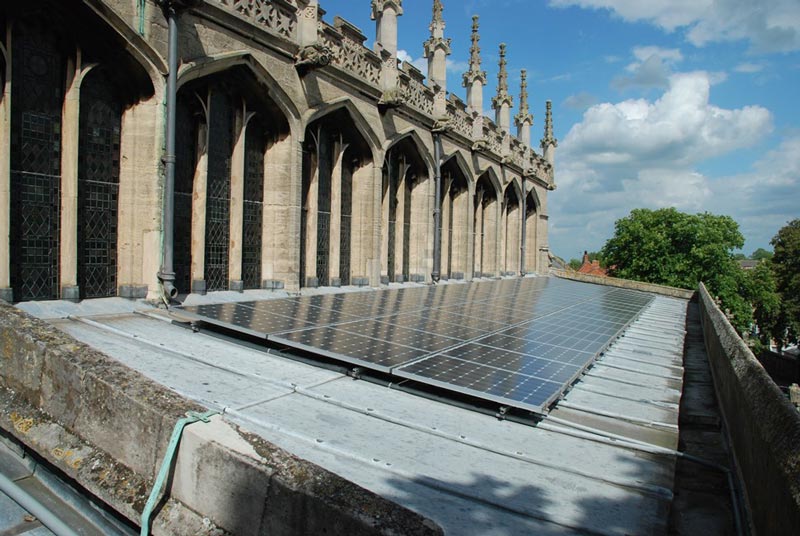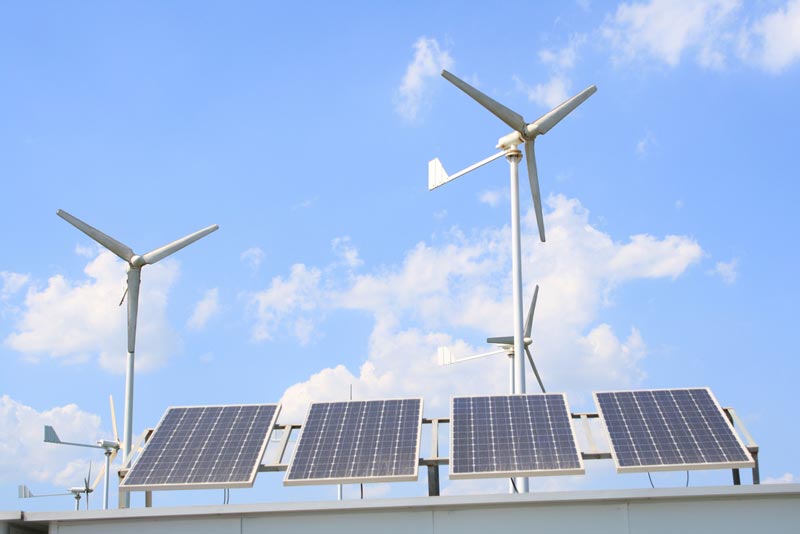Guidance Note 12 – Energy Efficiency In Church Buildings. Part 2: Renewable Energy Generation For Churches
The challenges for listed places of faith?
There are a range of options available to generate renewable energy for places of faith in South Australia. The most obvious options are outlined later in this guidance note. Apart from the capital costs involved in their installation, there are other challenges that require careful consideration.
The potential of microgeneration equipment should be assessed taking into account the following:
- the impact on the appearance and significance of the place of worship;
- the method of fixing and its potential impact on both the fabric of the building and regular maintenance (for example, solar panels may impede access for inspection or clearance of rainwater goods or result in water penetration);
- the cost of installation, maintenance, decommissioning and removal relative to the benefits and savings;
- the projected life and efficiency of the equipment relative to its impact and cost.

Guidelines on Statutory Approvals for works to install Renewable Energy Generation systems
A description of the significance of the heritage church involved must be reviewed in conjunction with the local council at the earliest opportunity, in order to put the proposals for works to install a renewable energy installation into the context of the whole building and its historic environment.
If the heritage place of faith is Local or State-listed, a statement of historic significance should be available which can be used to draw up an impact assessment for the proposed works. Overall, the greater the harm to the significance of the heritage asset, the greater the justification required for the works.

- Solar panels/ PVs
- Heat pumps
- Solar water heating
- Wind turbines
- Geothermal
1. Solar panels/ PVs
Before installing solar photovoltaics, it is worthwhile considering the following:
- the potential visual or physical impact on the fabric of the heritage church;
- carrying out an assessment of all types of energy microgeneration to ensure that photovoltaics are the right solution for your application;
- what energy you require – heating or electricity?;
- the amount of energy that could be generated and what the payback period would be; and,
- whether you need consent for the works from the local council.
- PV panel;
- inverter This converts the energy from the PV panel from direct current (DC) into useable alternating current (AC);
- isolator This is needed to be able to switch the power off from the PV array when carrying out maintenance or in an emergency; electrical distribution system The cabling, distribution board etc. which are needed to get the electricity generated to where we want to use it; and,
- batteries. These can be used to store the electricity generated for use later when it is needed.
- fixed over the roof covering;
- integrated into the roof covering;
- ballasted or fixed on a flat roof; or,
- free-standing ground-mounted, set away from the building.
Electricity Distribution & Storage Systems
Grid-connected system
Most PV systems are grid-connected and are linked to a main or a local distribution board. The system operates in parallel with the normal mains supply so that when the PV is not generating enough energy, mains electricity is used. If more electricity is generated by the PV than is needed, the excess can be either exported to the National Grid or stored in a battery for later use or diverted to another form of energy storage such as a hot water cylinder.
Off-grid system
Where a building or monument has no mains electricity, PV with batteries can be used to supply electricity to lighting and other low power devices. It may be a diesel generator is also used to supply electricity and this could be supplemented or even replaced with PV.

2. Heat pumps
Heat pumps can be used for heating or cooling spaces in a building.
Heat pumps take their heat energy from the ground, air or water and consequently can cost less to run than heating or cooling systems that use electricity or oil.
The heat pump upgrades heat from lower temperatures to higher temperatures, or vice versa.
The higher temperature heat generated can then be used to either heat spaces or hot water. Lower temperatures generated can cool spaces.
A heat pump uses the same process as a refrigerator which removes heat from inside the fridge space and emits it outside. When cooling a space a heat pump operates this way also. To warm a space a heat pump takes heat from outside the property and emits it into the building.
The heat pump has four main components:
a compressor, condenser, evaporator and expansion valve. A refrigerant flows between these in a process known as the ‘vapour compression cycle’.
System Options
When choosing a heat pump there are several different options to consider:
- the type of heat source – ground, air or water;
- the heat pump itself;
- the heat distribution system – radiators, underfloor heating, air heating.
Impact on building fabric and landscape
The visual impact of the heat pump system is important when installing it in a heritage place.

Maintenance and Working Life
It is important to understand that heat pump systems need to be properly maintained to ensure that they will operate efficiently and safely. Their expected working life also needs to be taken into account when planning for the future.
3. Solar Water Heating
A solar collector uses the sun’s radiant energy to heat water. The collector is normally fixed on the roof of a building, but there are installations where it has been located away from the building.
There are two main parts to a solar water heating system: the collector and the thermal store.
Unless there is a particularly high demand for hot water, for example your church building has a shower and/ or a large working kitchen, it is unlikely that a solar water heating system would be cost effective.
4. Wind turbines
Small wind turbines are most efficient when freestanding and placed in exposed locations where there is little obstruction from trees and buildings and where they can be positioned at a height and angle where wind speeds are the greatest. Whilst in practice they can be mounted to buildings, this is not recommended, not only due to the structural loading on the building, but because they are unlikely to perform well as such locations tend to receive weaker and irregular winds.
Given the limitations mentioned above, and the fact that turbines can be visually obtrusive, noisy and may kill birds and bats, their use may be difficult to justify around churches, especially within urban historic environments.
5. Geothermal
Geothermal energy generation relies upon the difference in temperature between the surface of the ground and the temperature in the earth deep beneath our feet.
Although there are a number of ways of generating geothermal energy, the most cost-effective means is by using ground-source heat pumps (please refer to 2 above).
Deep under the ground the earth is warmer . By coring down perhaps 50 metres or more greater energy can be drawn from the soil than is possible from coils laid in shallow earth. The draw back is that the capital cost is high and specialist advice is required to determine whether proposals for a geothermal energy installation would be cost effective in the long run.





